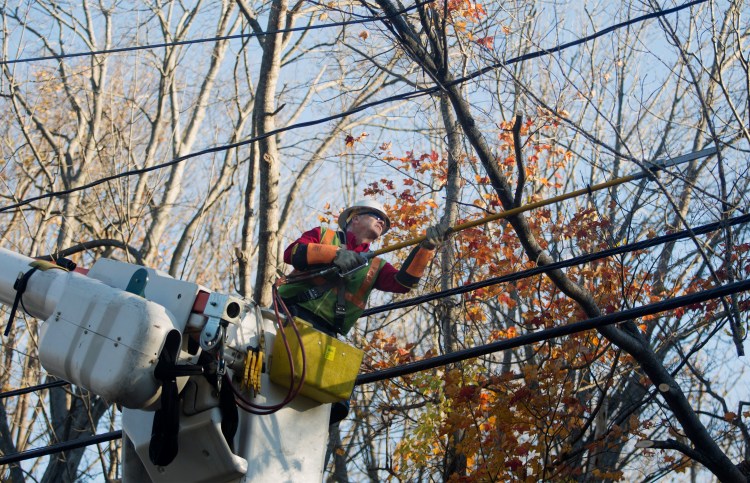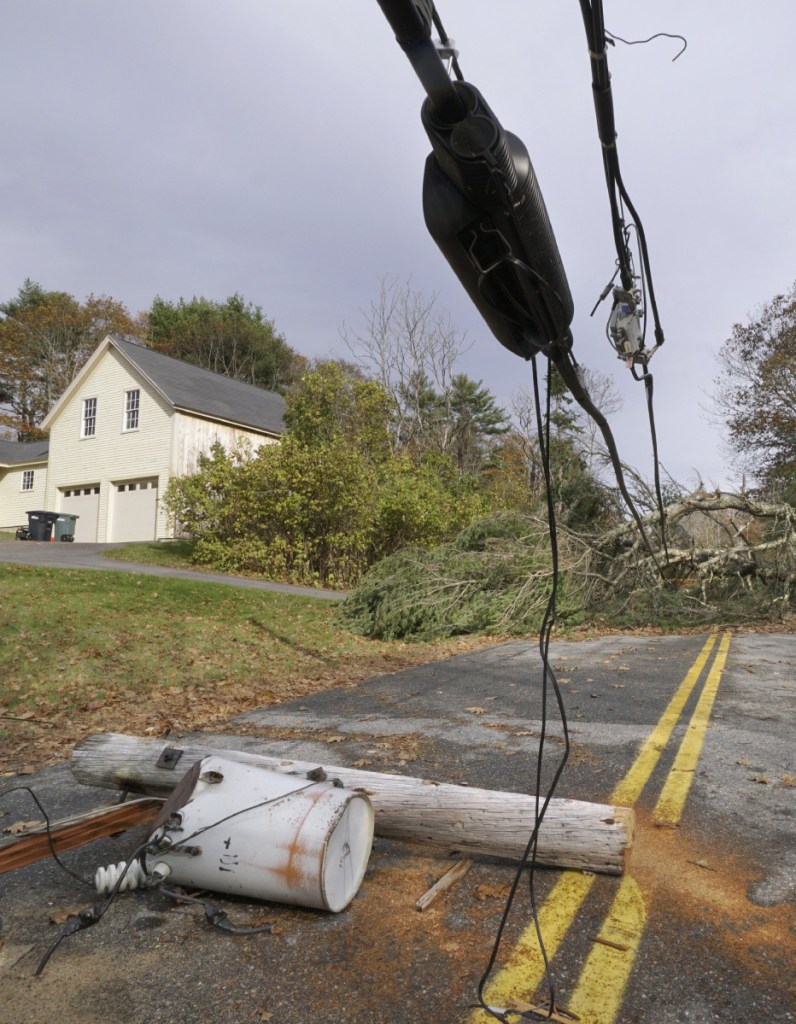The October windstorm that knocked out power to an unprecedented number of Mainers could cost the typical Central Maine Power customer a total of about $16.
CMP executives held a conference call Thursday before filing a 141-page response to the Maine Public Utilities Commission, which initiated an investigation last month of how CMP dealt with the storm.
Kevin Elwell, CMP’s director of electric distribution, and Eric Stinneford, the utility’s vice president and treasurer, both said that the massive storm that toppled hundreds of trees and poles tested the company’s resolve.
At its peak, about 470,000 customers were without power, the most ever – even more than during the ice storm of 1998.
Elwell said the company was ultimately pleased with its effort to restore power to 97 percent of customers in less than a week, but he also acknowledged that it could have better communicated with customers on restoration efforts.
In total, the short but destructive storm cost CMP about $69 million.
That’s a big number, Stinneford said, but there have been other individual storms in the last five years that have been in that range. The ice storm cost $70 million, but would have been more in today’s dollars.
Of that $69 million, about $32 million is tied up in damage to utility poles, transformers and other equipment. Stinneford said it’s likely that a good portion of that damage will be rolled into future rate increase requests over several years or decades.
The rest of the cost reflects what CMP spent on labor and equipment to get the lights back on. That works out to $27 million after subtracting what the company would have paid its own workers, anyway. In all, there were 1,400 utility workers who assisted with restoratio, or about seven times the normal number of line workers on call.
The $27 million will be shared based on a 2014 agreement between CMP, the Office of Public Advocate and other parties.
Essentially, the sharing works out to a 50/50 split. CMP said it will apply up to $14 million from its reserves to pay for its share, which leaves $13 million for customers.
That $13 million equates to about $1.30 per monthly bill for each customer if the amount is recovered over one year, or $0.65 per customer for two years.
The proposed costs still must be reviewed and approved by the Maine Public Utilities Commission, but the increase would appear in rates after July 1.
Maine’s other major utility, Emera, has yet to file its response to the PUC.
Stinneford said it’s still possible that the recently passed tax cuts by Congress could free up money at CMP to apply to the October storm, but it was too early to assess how much in tax savings would be available. Utility companies aren’t eligible for any of the approximately $4.7 million in federal disaster aid being distributed to Maine cities and towns that sustained damage from the storm.
If CMP is able to absorb the extra costs and spare ratepayers, it might quell criticism, much of it stemming from inaccurate information posted on its website about when certain neighborhoods would see their electricity restored.
Rep. Seth Berry, a Democrat from Bowdoinham and co-chair of the Legislature’s Energy, Utilities and Technology Committee, has been among the most critical of CMP’s response.
Although the impact of the recent storm on most ratepayers is relatively small, Berry has pointed out that residential electric transmission rates increased by 270 percent between 2007 and 2016, while CMP and its parent company, Avangrid, maintained an average profit margin of more than 10 percent.
“Today we see in black and white what CMP customers knew was coming ever since the lights went out during the ‘Halloween Storm’ of 2017: that our bills are going to go up,” Berry said Thursday. “CMP is an investor-owned company, but it is Maine ratepayers who will be on the hook to cover CMP’s costs, even though many of us were without power for days or longer.”
Elwell explained that the storm toppled more than 1,400 utility poles and hundreds of trees that were outside the maintenance zone. Many of those trees were uprooted by high winds.
Some critics have questioned whether CMP should consider moving some of its transmission lines underground, but Stinneford dismissed that idea Thursday as “prohibitively expensive.”
In addition to the PUC’s investigation, the Maine Public Advocate has launched an inquiry.
Also, a handful of bills are under consideration in this legislative session that could address some of the criticisms, both of ongoing rate increases by CMP and of its response to the October storm.
Eric Russell can be contacted at 791-6344 or at:
Twitter: PPHEricRussell
Send questions/comments to the editors.



